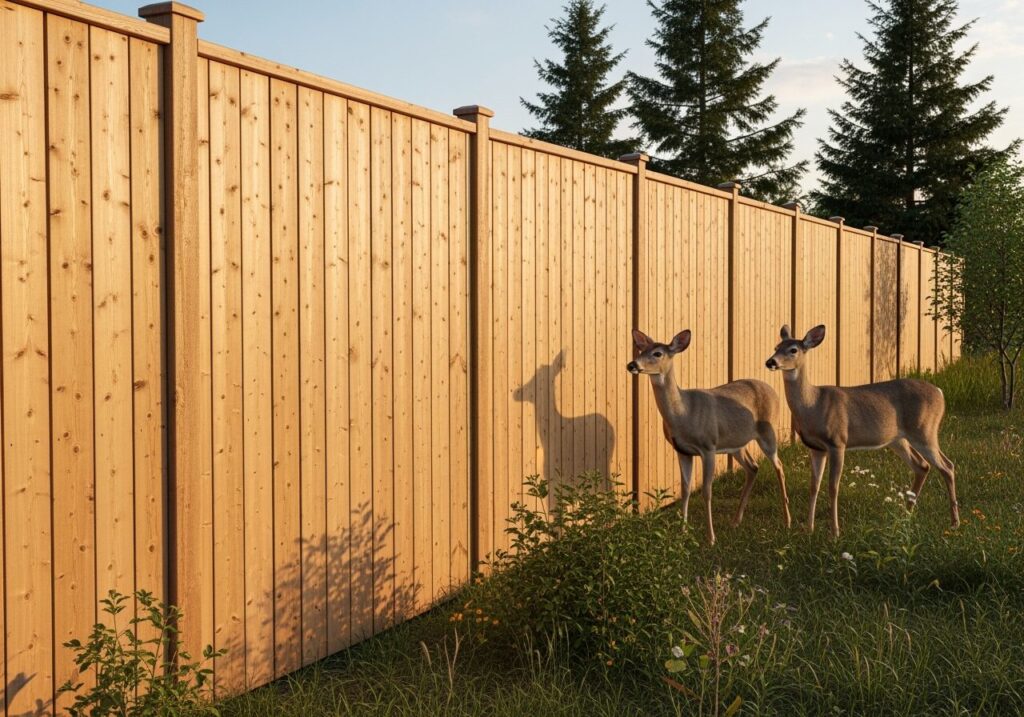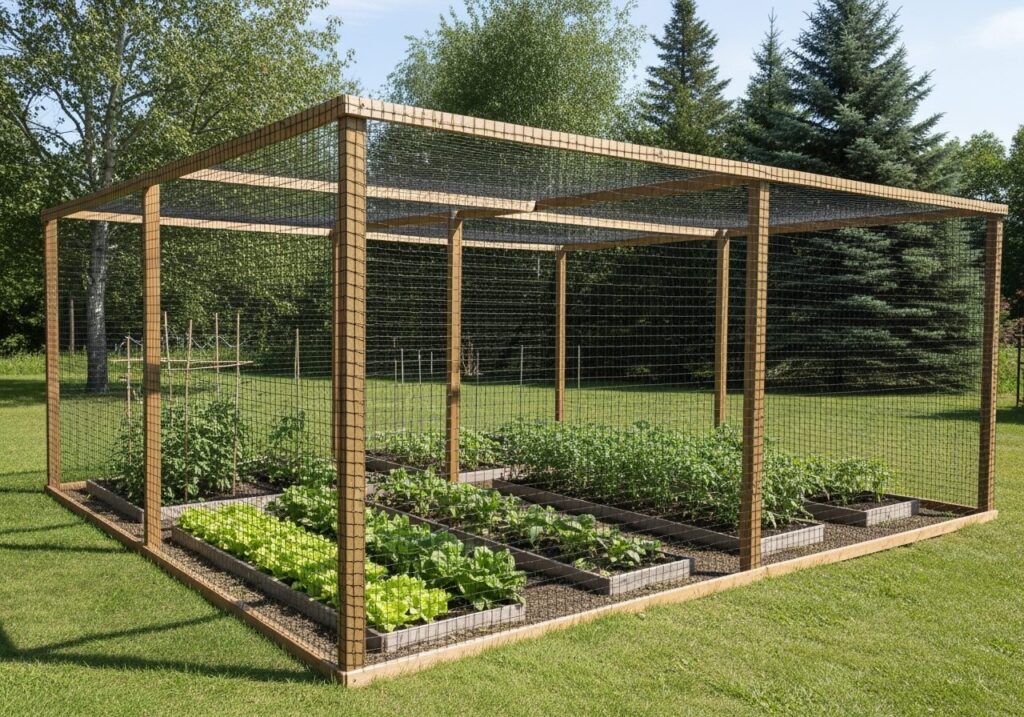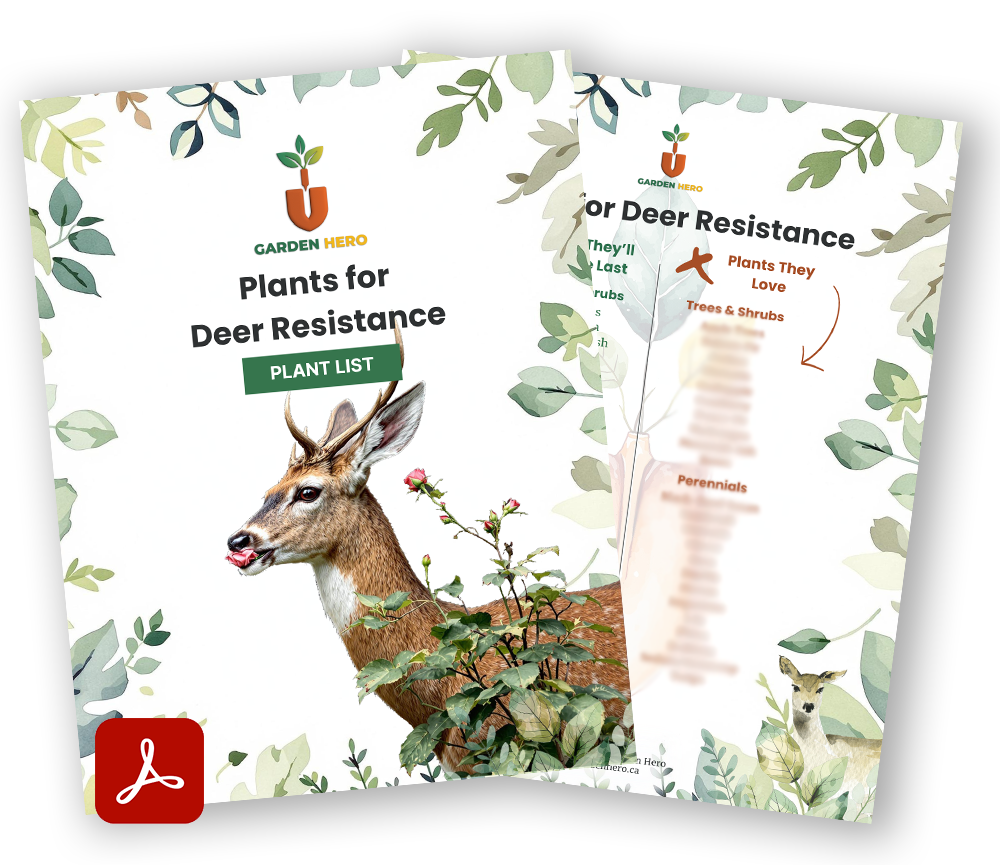You’ve tried the sprays. You’ve installed the motion sensors. You’ve even hung bars of Irish Spring soap like garden ornaments. But those four-legged garden raiders keep treating your carefully planned landscape like their personal all-you-can-eat buffet. When subtle deterrents aren’t cutting it and you’re ready to draw a firm line in the soil, it’s time to talk serious barriers.
A well-designed deer fence isn’t just a boundary – it’s a peace treaty between you and the local wildlife that clearly states: “This side is mine, that side is yours.” While fencing requires more upfront investment and planning than other solutions, it’s also the most reliable way to reclaim your garden once and for all.
The challenge? A motivated deer can sail over a standard fence like it’s barely there. But with smart design, proper ‘deer fence height’, and a few clever tricks, you can create a barrier that even the most determined deer will respect. Here’s how to build a fence that actually works – without turning your yard into a maximum-security compound.
Why Fencing Works (When Done Right)
Nothing keeps deer out of a garden as reliably as a good fence. In many cases, a deer-proof fence is the best solution – but it must be tall and well-designed. Deer are excellent jumpers, easily clearing standard yard fences. Experts recommend a fence at least 8 feet high to deter jumping. In fact, an 8-foot deer fence is often considered the minimum for areas with heavy deer pressure. The downside, of course, is that tall fences can be expensive and may conflict with local bylaws or aesthetics (nobody wants their home to feel like a fortress).
Here are some fencing strategies to keep deer out while balancing practicality:

Solid Privacy Fence
Deer are less likely to jump a fence if they can’t see what’s on the other side. They don’t like leaping into an area if they’re unsure of the landing spot. A tall, opaque fence (wooden, vinyl, etc.) can deter deer more than a see-through fence of the same height. A 6-8 foot solid fence around a yard can be very effective – it both blocks entry and conceals your tasty garden from view. (If a full perimeter fence isn’t possible, consider a privacy fence on the side where deer typically come from, or around the most valuable part of the garden.)

Angled or Double Fences
Deer have poor depth perception and cannot jump both high and wide in one go. Some gardeners use a clever trick: build a sloped fence, angling outward at 45°. For example, a 6-foot tall fence angled outward presents a confusing obstacle – the deer can’t judge its true height and width, so they often won’t attempt a jump. Another approach is a double fence: two lower fences (say 4 feet high each) spaced a few feet apart. Deer feel trapped by the gap and usually won’t jump into the confined space between two fences. If you already have a 4-ft picket fence, installing a second inner fence a few feet away can do the trick. Even running a line of tall stakes or string inside an existing fence can create that visual depth that discourages jumping.
Budget Friendly Options That Still Work
A deer-proof garden fence might run a higher bill than you’d like, and if that’s the case, be sure you’ve tried all your other options first. Be sure to check out our other articles on deer-proofing your yard, and consider these fencing alternatives:

Deer Netting Enclosures
If a heavy-duty fence isn’t feasible, deer netting can offer a cheaper barrier. Black polypropylene deer netting, about 7–8 feet tall, can be draped around garden areas. It’s relatively unobtrusive to the eye and much cheaper than wood or metal fencing. Just be sure to mark the netting with some flags or ribbons so deer see it before they tangle in it. Netting works best for smaller gardens or individual garden beds. Many gardeners build simple frames around vegetable plots or prized shrubs and affix netting as a temporary fence during the growing season.

Cages and Crop Covers
Rather than fencing an entire yard, you can protect specific plants. For example, put wire cages or netting around young trees, especially fruit trees, to prevent deer from stripping the leaves. Use mesh or cloth row covers over vegetable beds at night. Even draping bird netting directly over a plant can sometimes save it from a nibbling deer. This targeted approach is labor-intensive but useful if you only have a few vulnerable plants (like a single rose bush or a small salad garden).

Planning Your Deer Defense Strategy?
Combine your fencing with plants deer naturally avoid for maximum protection. Download our free Zone 2-4 Deer-Resistant Plant List to create an impenetrable garden fortress.
Installation Success Tips: How To Build a Deer Fence
Height Matters Most: Don’t compromise on height to save money – a 6-foot fence might as well be a welcome mat for determined deer. If 8 feet feels too imposing, consider a 7-foot fence with an angled top section.
Mind the Gaps: The key with fences and barriers is to be thorough – a partial gap or a low spot is where a determined deer will find entry. Walk your perimeter regularly and fix any weak spots immediately.
Gate Discipline: Ensure gates remain closed; a deer that wanders through an open gate can wreak as much havoc as one that jumps a fence. Consider self-closing hinges or prominent reminder signs for family members.
Ground Level Security: Some deer will try to crawl under fences, especially if there’s a gap. Secure the bottom of your fence to the ground or bury it slightly.
Dealing with Regulations and Neighbors
Before installing an 8-foot fence, check local bylaws and HOA regulations. Many areas have height restrictions, especially for front yards. Consider these options:
- Install the tallest fence allowed, then add lattice or trellis sections for extra height, if allowed.
- Use plantings to create natural barriers alongside shorter fences
- Focus tall fencing on the back and sides where deer typically enter
- Use a double-fence or angled-fence strategy, instead of a tall fence.
The Investment Reality Check
While fencing may require a significant upfront investment, remember that a deer can destroy months of garden work in one night. Many gardeners find that a sturdy fence pays for itself in saved plants and peace of mind. Consider the math: if you’re spending $200+ annually on repellents, replacement plants, and other deterrents, a permanent fence solution might be more economical in the long run.

Want More Zone 2-4 Garden Resources?
Join our email list for resources on other common garden pests, and proven strategies that work in challenging Zone 2-4 conditions.
When Fencing Isn't Enough
Even the best fence can fail if deer are desperate enough. During harsh winters or drought conditions, hungry deer become more determined and creative. In these cases, combine your fence with other deterrents – motion sprinklers just inside the fence line, repellent sprays on nearby plants, or strategic planting can provide that extra layer of discouragement.
The Bottom Line: Your Garden Fortress
A well-designed deer fence is the closest thing to a guarantee you’ll get in the world of deer deterrence. Yes, it’s an investment. Yes, it changes the look of your property. But if you’re tired of playing defense against persistent deer, a proper fence lets you finally go on the offense.
The key is choosing the right approach for your situation – whether that’s a full perimeter privacy fence, a clever double-fence system, or strategic netting around high-value areas. With proper planning and installation, you can create a barrier that protects your garden while still maintaining the beauty and accessibility you want.
After all, there’s nothing quite like the peace of mind that comes from knowing your garden is truly safe – and that those prize tomatoes will actually make it to your dinner table instead of becoming an expensive deer buffet.
